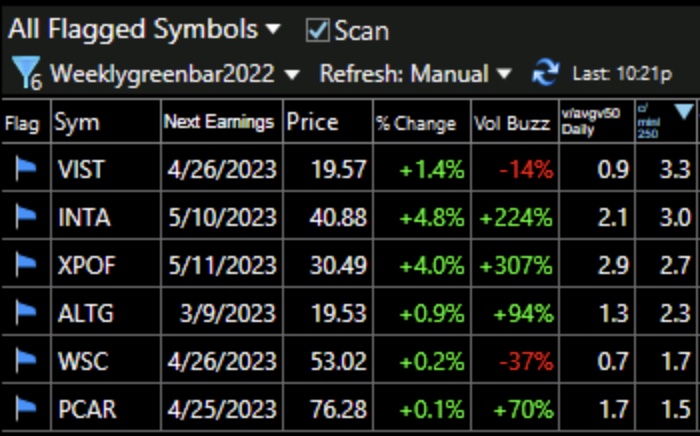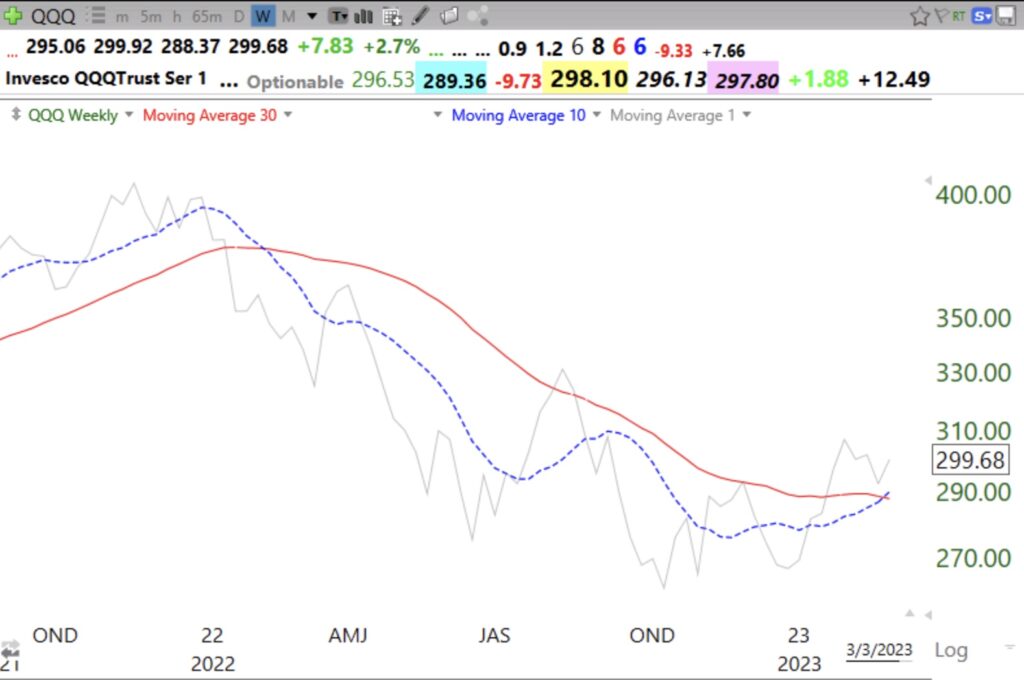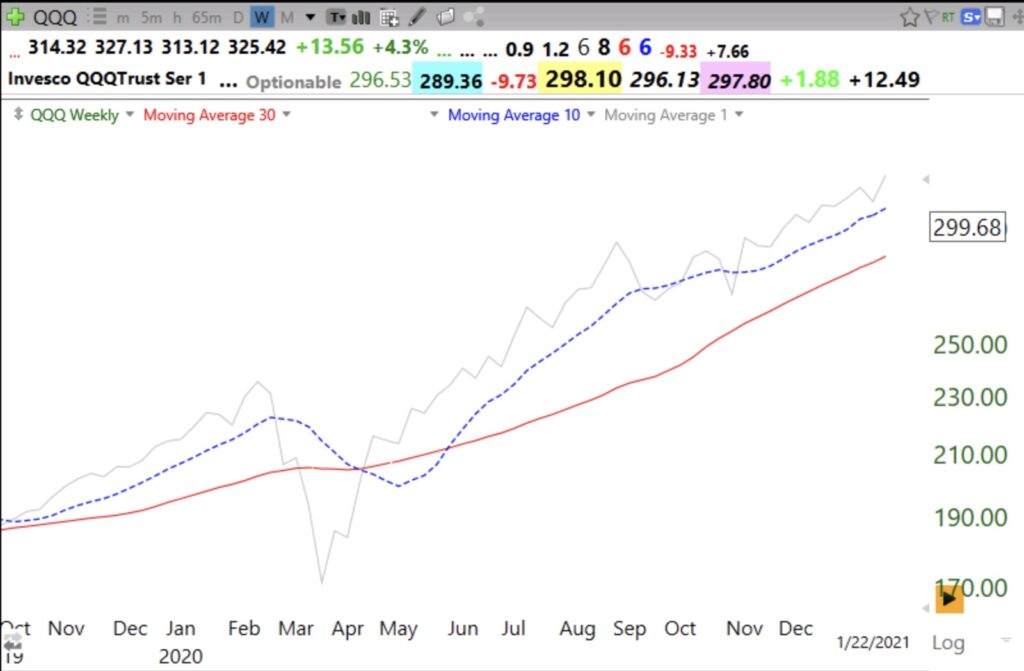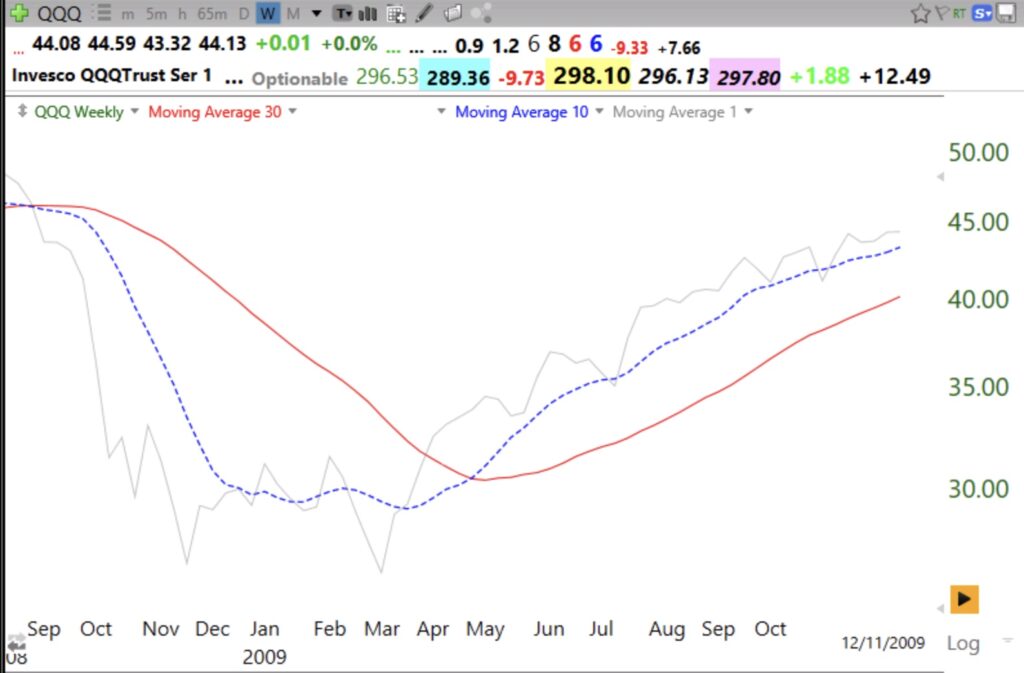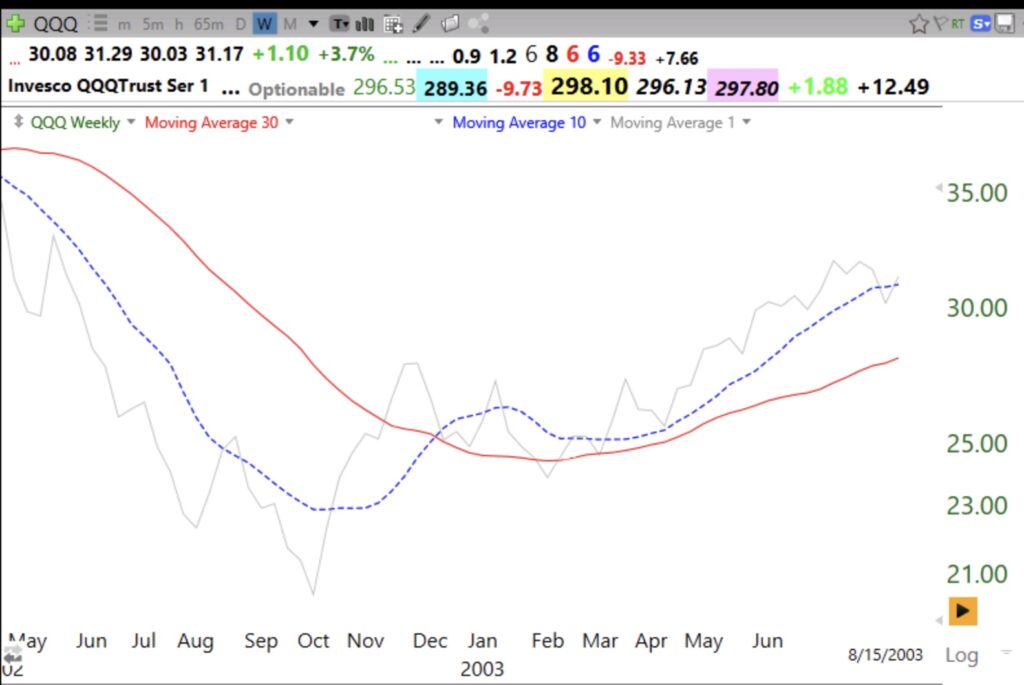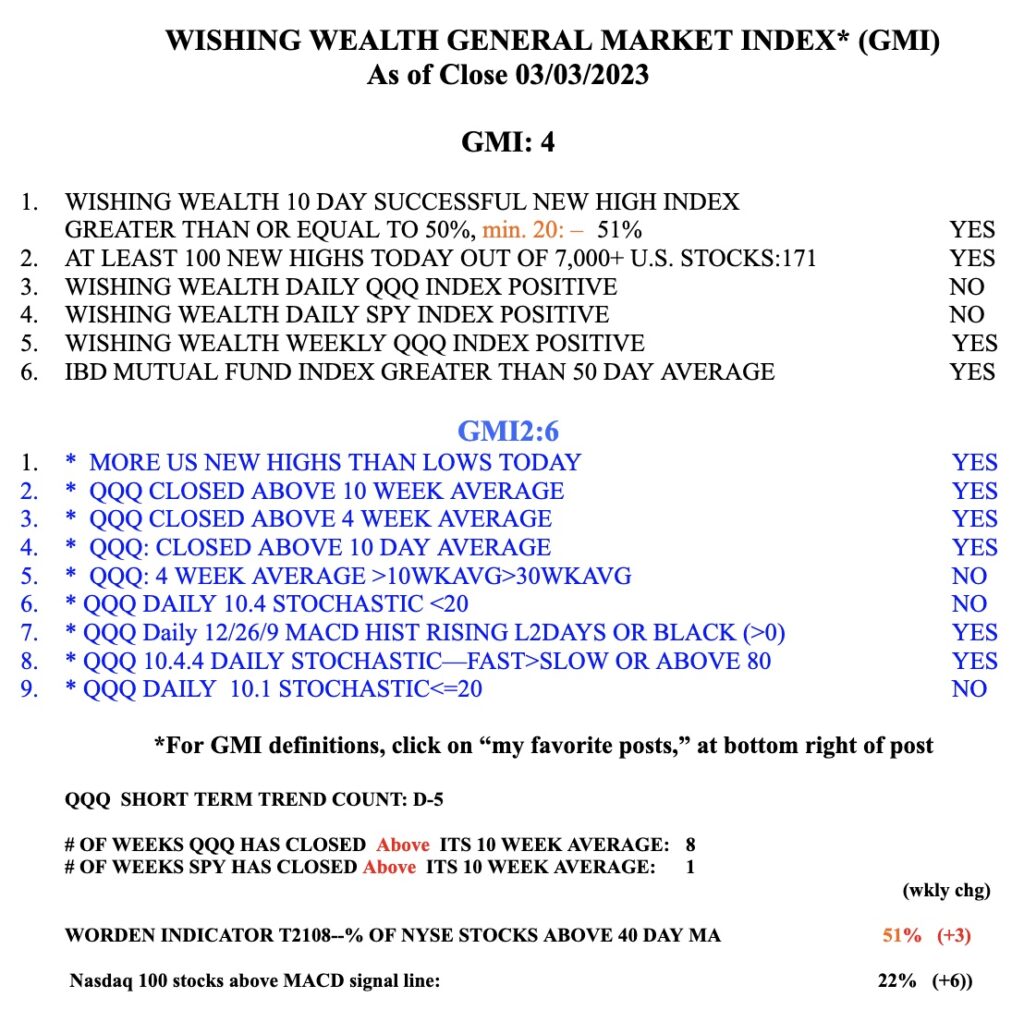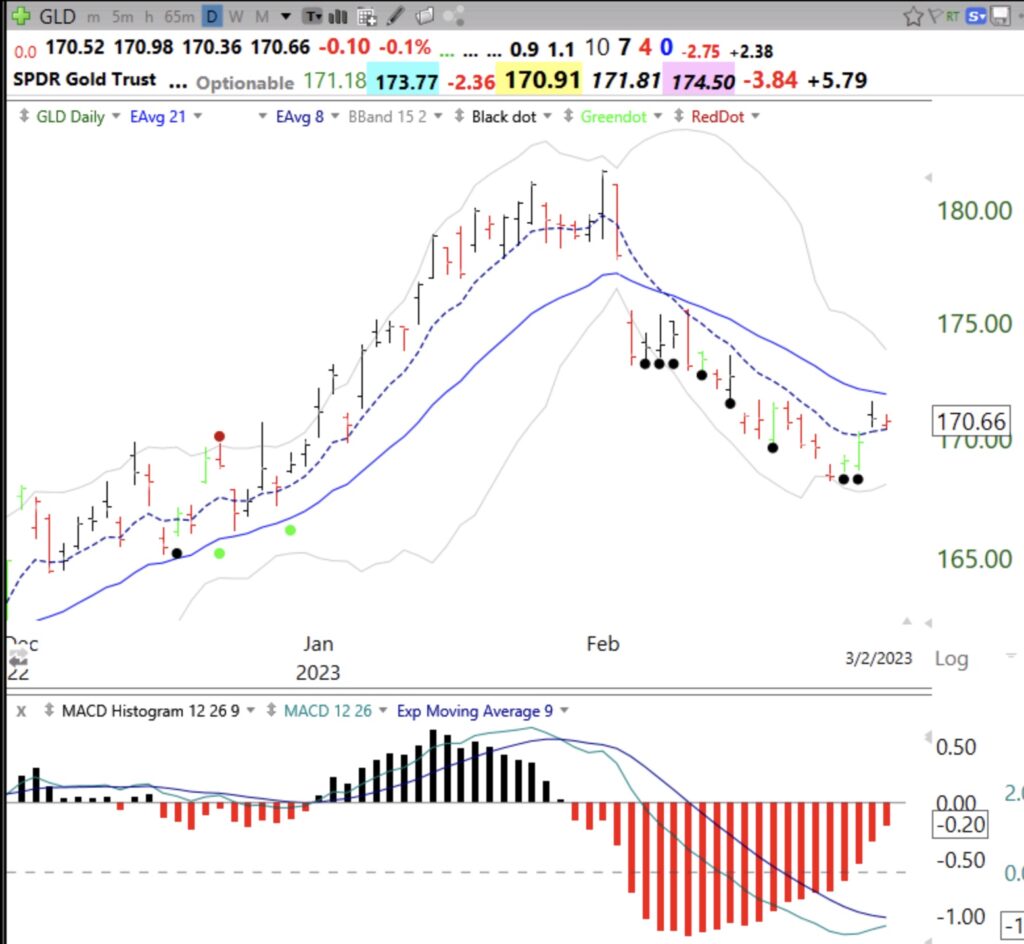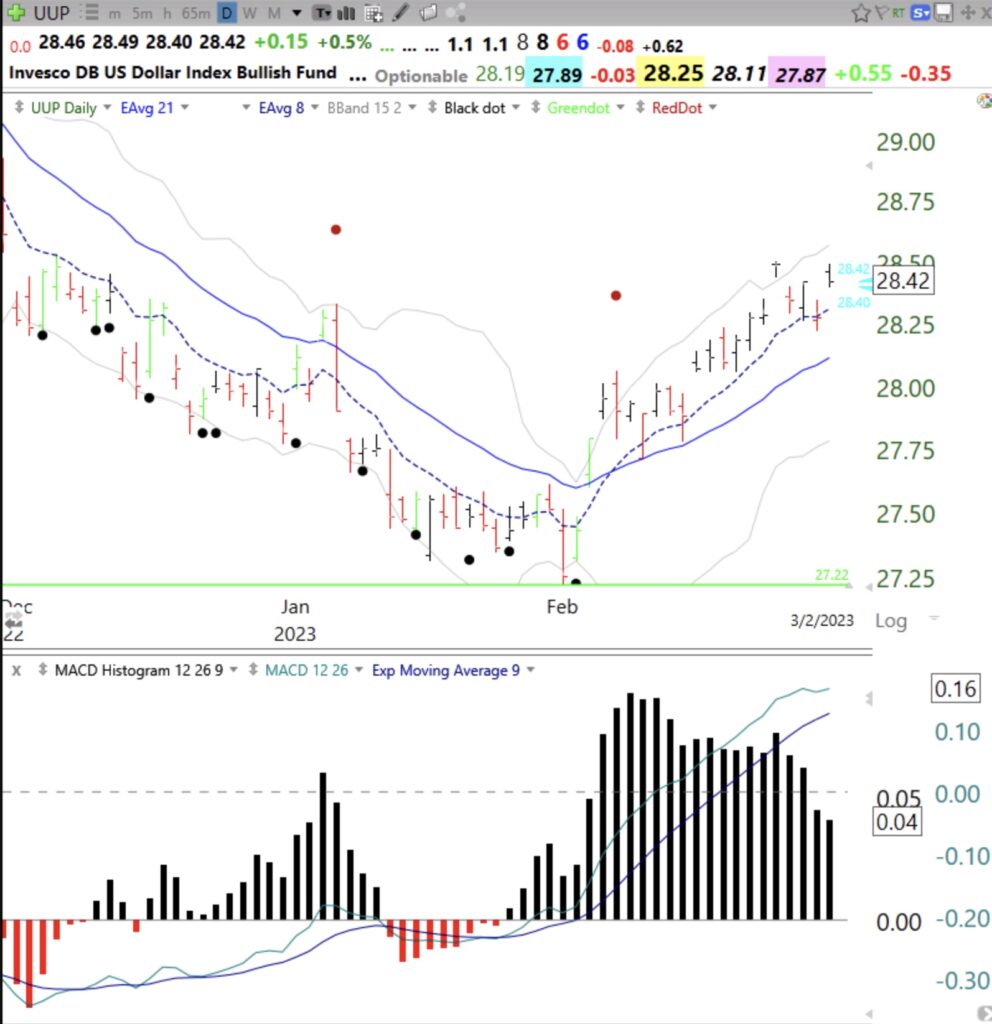These stocks have a weekly green bar already as of Monday. They are sorted by close/minimum low last 250 days. VIST and INTA have already tripled from their yearly lows. They are all on my IBD/MS watchlist. Green bar scan= ATH in past 3 months, rising pattern of 4wk>10wk>30wk, currently bouncing rising 4wk avg and RS at 20 week high.
Blog Post: $QQQ short term down-trend could end Monday, the GMI is Green, Mr. Market appears to be getting ready to rally, compare current pattern with 10:30 weekly charts of bottoms in 2020, 2009 and 2002
After coming close to beginning a new longer term decline, the market appears to be getting stronger. MY QQQ short term trend indicator could turn up with a good day on Monday. This 10:30 weekly chart of QQQ shows its 10 week average (dotted line) is now above its 30 week average (red line). This pattern has been true for DIA and SPY for several weeks. This pattern of the 10 week above the 30 week typically indicates the beginning of a major longer term up-trend. The gray line is the weekly close. If the gray line should return below the two averages and lead the 10 week below the 30 week it would likely signal the end of the new up-trend.
And the bottom in 2008-9.
And the 2002 bottom.
The GMI continues to flash Green and is at 4 (of 6).
Blog Post: Day 4 of $QQQ short term down-trend; 129 new US highs, 181 lows; MACD histograms suggesting turn in GLD and UUP, see charts
The MACD histograms often show a change in trend before it is evident in the price. Look at how the histogram has been steadily rising as price declines=positive divergence.
In contrast, the dollar, UUP, is showing a negative divergence.
Gold rises as the dollar falls. Compare the two charts. As the value of the dollar declines, it takes more dollars to buy an ounce of gold.
